14
C Block, HMCS AvalonCirca 1941
St. John's, Newfoundland, Canada
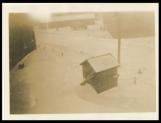 Credits:
Credits:Patrick Griffiths Collection
2007-2008 Album, Crow's Nest
15
C Block, HMCS AvalonCirca 1941
St. John's, Newfoundland, Canada
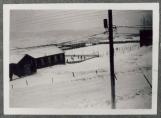 Credits:
Credits:Patrick Griffiths, Canadian Secretary, Royal Navy Patrol Service
2007-2008 Album, Crow's Nest
16
WRENs at HMCS Avalon, St. John's NewfoundlandCirca 1942
St. John's, Newfoundland, Canada
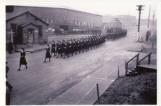 Credits:
Credits:Gary Browne
Jacquey Ryan
Stanley-Saunders Collection
17
Marching Band and WRENs at HMCS AvalonCirca 1942
St. John's, Newfoundland, Canada
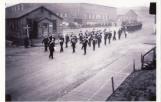 Credits:
Credits:Stanley-Saunders Collection
18
Escorting Troops up Long's HillCirca 1940
St. John's, Newfoundland, Canada
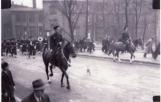 Credits:
Credits:Gary Browne
Jacquey Ryan
Stanley-Saunders Collection
19
Well there was always a tremendous relationship between the Newfoundland Constabulary (which later became the Royal Newfoundland Constabulary) with the Military going back to the 1700's and 1800's in Newfoundland and right through the First World War but I think more specially there was a really close working relationship between the military especially the navy in St. John's mostly during the Second World War but also in places like Argentia and Botwood because one has to remember that was prior to 1949 and we were our own country then and believe it or not I often refer to it is, with a national police force and the Newfoundland Constabulary were that, they were all over the island and it was only them and there was a great working relationship between the military and the navy. In this interview I will be coming to you from a point of view of policing and often times as a retired police officer myself of almost 32 years and my dad and uncle who served during second world war here in St. John's I've heard it all since I was a young person, about the war it's reaction as far as the people of Newfoundland are concerned and especially the police officers and there was the good the bad and the ugly of the whole thing because it was tough times. There was a war going on, a lot of the young men who were coming here and being stationed in St. John's, a very critical place for the Newfoundland Escort force that were taking the convoys from here and bringing them halfway the middle of the Atlantic out around Iceland and Greenland and they would be taken over by the British or whoever and brought over to London, but these men young men mostly would come back to St. John's and they would be through a rough time and a lot of their ships were sunk by German torpedoes which were all in the North Atlantic so when they would come off maybe a week or two out there under tremendous stressful times they would come back into St. John's, most of them were young, they were away from their loved ones, away from their wives. There was a lot of stress on them so what would you do when you got into port ? There would be heavy drinking and probably there would only have been 3 or 4 percent of these many thousands and there were many thousands of soldiers, navy, merchant marines here in St. John's and St John's was an extremely busy place during the second world war and from a police perspective if you add to that there was a blackout so in the night times the lights would be out because they were afraid of the German Submarines and also attack, there was a big worry and a fear from attack from these special huge, I forget the name, these German Navy vessels that could actually come that close to Newfoundland and fire, so there was a blackout and they were worried about vehicles and their headlights that could be seen on so many hills in St. John's, that those lights could be picked up by submarines quite easily so the police not only had to worry about law and order in the darkness but they also had to worry about, it was there job to make sure the lights were down and the blinds were down and they worked closely, of course with the Air Raid wardens. They went out with the police together and I remember my dad knew a lot of them and when I spoke to some family members of people who were air wardens during the Second World War, they knew a lot of police officers because they used to do duty. Now the air wardens would be volunteers, people who would work in the daytime and go out at night and they were never given a lot of feedback and thanks for what they did but it was really important. So St. John's was extremely busy and because we were a British Colony, a dominion and the Commission of Government, we were being run, we had given up our government, we were being run from Britain again when the war was on so a lot of the things came from Britain and was here so the police had a lot to do with the British MI 5 or the British Security Services and of course the British Navy and the Canadian Navy played a major role and in the night times the police officers because of the darkness would have to put a white belt on, a covering over their belt so that the people would know that was the police.20
HMCS Avalon Naval Fire Service Badge30 June 1945
St. John's, Newfoundland, Canada
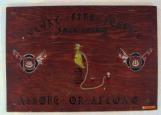 Credits:
Credits:Back of plaque: C.O. J.E. Beales RCNVR, Base Naval Fire Chief, St. John's Newfoundland 30-6-45.
21
Gunshield Art, this one for HMCS Avalon Fire Service, were common during the early part of the war. Started by sailors in the RCN to boost moral and comradeship, gunshields were generally cartoon like and represented some attribute of the ship or her crew. The artwork was painted on the shield of the forward gun. Land based units of the RCN wanted to be a part of the new fad and developed their own distinct unit gunshields.22
Submarine nets such as those visible in the next two pictures, were placed across the entrance to the harbour to prevent torpedoes fired by U-Boats lurking menacingly outside the entrance of the port of St. John's, from entering the harrbour.23
Entrance to St. John's Harbour, with Submarine Nets VisibleCirca 1943
St. John's Harbour, Newfoundland
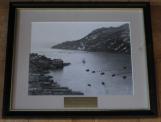 Credits:
Credits:LCOL (RT'D) Russ Comeau
24
Joe and Stan at the Narrows with Submarine Nets in the BackgroundSeptember 1943
St. John's Harbour, Newfoundland
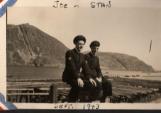 Credits:
Credits:Ruby Moores Thomas Collection
25
The following picture depicts local messengers delivering telegrams for the local telegraph. These individuals would ride on bicycles throughout the city delivering telegrams. This was a common method of communication during wartime.26
Telegram (telegraph) Delivery BoysCirca 1940
St. John's, Newfoundland, Canada
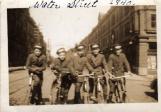 Credits:
Credits:Ruby Thomas-Moore Collection
27
St. John's HarbourCirca 1941
St. John's, Newfoundland, Canada
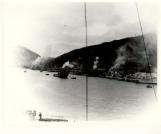 Credits:
Credits:John Sandison Collection
2007-2008 Album, Crow's Nest